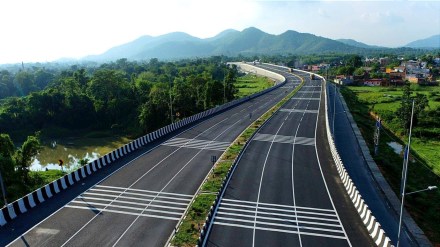In one of the major moves in road infrastructure around the country, all existing single-lane National Highways (NH) will be converted to double lanes. Additionally, all national highways will be required to have two lanes along with paved shoulders to receive an NH tag, two persons privy with the plans of the road ministry mentioned.
A paved shoulder refers to the section of a highway that runs parallel to the main travel lanes and is at the same level. It serves a dual function by providing functional space for bicyclists and pedestrians to travel in the absence of other facilities with more separation.
This new standard will be outlined in the regulations governing the construction of national highways, a report by LiveMint stated.
Notably, the single-lane national highways may continue in hilly regions considering the environmental impacts of broadening the roads. The expansion of NH would be considered only after an environmental impact assessment, and only if the project can be executed with limited damage to fragile Himalayan ecosystems, the officials said on condition of anonymity.
Earlier, Road Ministry Secretary Anurag Jain mentioned to Mint that the changes in the highway criterion were being worked out to ensure that such alignments conform to today’s mobility requirements.
Rapid rise of national highways
It is noteworthy that these changes assume significance given that India is implementing one of the world’s largest highway-building programs with about 50,000 km of highways to be constructed over the next 15 years.
The National Highway (NH) network in the country increased by 60% from 91,287 km in 2014 to 1,46,145 km in the year 2023. Similarly, India has the world’s second-largest road network of about 66.71 lakh km.
Going forward, no highway will be made of less than two lanes barring a few exceptions, the officials quoted above said.
At present 90% of the present highway network comprises two lanes, two lanes with paved shoulders, four lanes, and more than four lanes.
On the other hand, the length of four-lane and above highways stood at 46,179 km (about 32% of total highway length) while that of two-lane and two-lane highways with paved shoulders stand at 85,096 km (about 58%).
